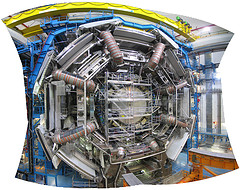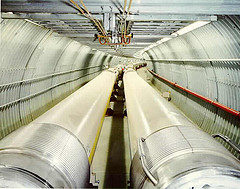Modern renormalization and collider physics
Winter, 2008, TIFR
Part A: Renormalization and effective theories
What is renormalization?
Renormalization and renormalization group flows; effective long distance theories. A solvable example to illustrate the notions of ultraviolet cutoff, fixed points, stability of low-energy scattering matrix elements, bound state energies, non-trivial scaling etc.
Effective theories and new physics
Effective theory of QED: the Euler-Heisenberg action. Axions: how to include unknown physics into effective theories. Applications to astrophysics. Effective theories of modified gravity.
Effective theories of electroweak symmetry breaking
Effective theories at finite temperature
Part B: Application to colliders
Perturbative QCD: a single scale
Two scales: Sudakov resummations
Hydrodynamics: evolution of slow modes
Colour glass condensate: parton saturation
Sourendu Gupta: Created on Sep 7, 2007.



